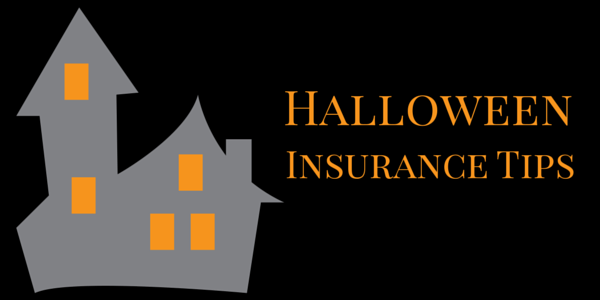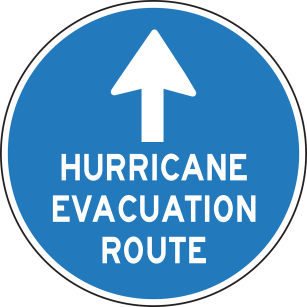![Money-Insurance1[1]](https://scdoi.files.wordpress.com/2019/07/money-insurance11.jpg?w=278&h=161) Insurance is here to help out with expenses after a disaster strikes and many policy holders want to know how quickly they can expect to receive their payout after they file a claim.
Insurance is here to help out with expenses after a disaster strikes and many policy holders want to know how quickly they can expect to receive their payout after they file a claim.
And while processing times do vary from company to company and are dependent on the type of claim, Insurance Information Institute (III) has provided a good overview of what you can expect.
The initial payment isn’t final
In most instances, an adjuster will inspect the damage to your home and offer you a certain sum of money for repairs, based on the terms and limits of your homeowners policy. The first check you get from your insurance company is often an advance against the total settlement amount, not the final payment.
If you’re offered an on-the-spot settlement, you can accept the check right away. Later, if you find other damage, you can reopen the claim and file for an additional amount. Check your policy to know how long you have to reopen claims.
You may receive multiple checks
When both the structure of your home and your personal belongings are damaged, you generally receive two separate checks from your insurance company, one for each category of damage. If your home is uninhabitable, you’ll also receive a check for the additional living expenses (ALE) you incur if you can’t live in your home while it is being repaired. If you have flood insurance and experienced flood damage, that means a separate check as well.
Your lender or management company might have control over your payment
If you have a mortgage on your house, the check for repairs will generally be made out to both you and the mortgage lender. As a condition of granting a mortgage, lenders usually require that they are named in the homeowners policy and that they are a party to any insurance payments related to the structure. Similarly, if you live in a coop or condominium, your management company may have required that the building’s financial entity be named as a co-insured. This is so the lender (and/or, in the case of a coop or condo, the overall building), who has a financial interest in your property, can ensure that the necessary repairs are made. When a financial backer is a co-insured, they will have to endorse the claims payment check before you can cash it. Depending on the circumstances, lenders may also put the money in an escrow account and pay for the repairs as the work is completed. Show the mortgage lender your contractor’s bid and let the lender know how much the contractor wants upfront to start the job. Your mortgage company may want to inspect the finished job before releasing the funds for payment to the contractor. If your home has been destroyed, the amount of the settlement and who gets it is driven by your policy type, its specific limits and the terms of your mortgage. For example, part of the insurance proceeds may be used to pay off the balance due on the mortgage. And, how the remaining proceeds are spent depend on your own decisions, such as if you want to rebuild on the same lot, in a different location or not rebuild at all. These decisions are also driven by state law.
Your insurance company may pay your contractor directly
Some contractors may ask you to sign a “direction to pay” form that allows your insurance company to pay the firm directly. This form is a legal document, so you should read it carefully to be sure you are not also assigning your entire claim over to the contractor. When in doubt, call your insurance professional before you sign. Assigning your entire insurance claim to a third party takes you out of the process and gives control of your claim to the contractor. When work is completed to restore your property, make certain the job has been completed to your satisfaction before you let your insurer make the final payment to the contractor.
Your ALE check should be made out to you
Your check for additional living expenses (ALE) has nothing to do with repairs to your home. So, ensure that this check is made out to you alone and not your lender. The ALE check covers your expenses for hotels, car rental, meals out and other expenses you may incur while your home is being fixed.
Your personal belongings will be calculated on cash value, first
You’ll have to submit a list of your damaged belongings to your insurance company (having a home inventory will make this a lot easier*). Even if you have a replacement value policy, the first check you receive from your insurer will be based on the cash value of the items, which is the depreciated amount based on the age of the item. Why do insurance companies do this? It is to match the remaining claim payment to the exact replacement cost. If you decide not to replace an item, you’ll be paid the actual cash value (depreciated) amount for it.
To get replacement value for your items, you must actually replace them
To get fully reimbursed for damaged items, most insurance companies will require you to purchase replacements. Your company will ask for copies of receipts as proof of purchase, then pay the difference between the cash value you initially received and the full cost of the replacement with an item of similar size and quality. You’ll generally have several months from the date of the cash value payment to purchase replacements; consult with your agent regarding the timeframe. In the case of a total loss, where the entire house and its contents are damaged beyond repair, insurers generally pay the policy limits, according to the laws in your state. That means you can receive a check for what the home and contents were insured for at the time of the disaster.
We couldn’t have said any of this better than III did. The SCDOI gives credit to III for the information in this blog post. Please click their link to visit the original post and to access some excellent links.
*This link was added by the SCDOI. The link takes you to the Home Inventory Checklist by the NAIC.

 Keep your pets away from trick-or-treaters. Pugs in bumble bee costumes are cute, but they may not find a whole bunch of excited kids as cute. Keep them inside or secured away from visitors.
Keep your pets away from trick-or-treaters. Pugs in bumble bee costumes are cute, but they may not find a whole bunch of excited kids as cute. Keep them inside or secured away from visitors. And remember, standard homeowners insurance policies provide liability protection from common Halloween risks, such as trick-or-treaters who trip and fall on your property. If an incident at your home results in a lawsuit, the liability portion of your homeowners insurance policy pays for both the cost of defending you in court and any court awards—up to the limit stated in your policy documents.
And remember, standard homeowners insurance policies provide liability protection from common Halloween risks, such as trick-or-treaters who trip and fall on your property. If an incident at your home results in a lawsuit, the liability portion of your homeowners insurance policy pays for both the cost of defending you in court and any court awards—up to the limit stated in your policy documents.![pets_insurance[1]](https://scdoi.files.wordpress.com/2019/10/pets_insurance1.png?w=345&h=223) Do you have a loved dog or cat…or some other house pet that you want to get insurance for? If so, you’re not alone. U.S. pet owners spent more than $1 billion on insurance for their pets last year. That is a jump of 23% in money spent on covering pets. It is estimated that 1.8 million dogs and cats are covered by insurance now, according to the North American Pet Health Insurance Association. Often times, owners are promised affordable, lifetime health care for their pet, but that may not always be the case.
Do you have a loved dog or cat…or some other house pet that you want to get insurance for? If so, you’re not alone. U.S. pet owners spent more than $1 billion on insurance for their pets last year. That is a jump of 23% in money spent on covering pets. It is estimated that 1.8 million dogs and cats are covered by insurance now, according to the North American Pet Health Insurance Association. Often times, owners are promised affordable, lifetime health care for their pet, but that may not always be the case.
![schoolsafety[1]](https://scdoi.files.wordpress.com/2019/08/school20safety1.jpg?w=730)
![Personal-accident-insurance-Standalone-or-add-on-rider-which-is-better[1]](https://scdoi.files.wordpress.com/2019/08/personal-accident-insurance-standalone-or-add-on-rider-which-is-better1.png?w=452&h=247) Simply put, accident insurance is a form of insurance policy which offers a payout when people experience injury or death due to an accident. This type of insurance does not usually cover negligence, acts of God, or natural disasters, and the policy may include restrictions such as caps on total payouts or restrictions on payouts for activities deemed risky. Many insurance companies sell accident insurance, which can be purchased as a standalone policy or bundled in to an existing insurance policy.
Simply put, accident insurance is a form of insurance policy which offers a payout when people experience injury or death due to an accident. This type of insurance does not usually cover negligence, acts of God, or natural disasters, and the policy may include restrictions such as caps on total payouts or restrictions on payouts for activities deemed risky. Many insurance companies sell accident insurance, which can be purchased as a standalone policy or bundled in to an existing insurance policy.

 To ensure that you and your family are fully prepared for a sudden evacuation, do a real-time test. Give yourself just 10 minutes to get your family and belongings into the car and on the road to safety. By planning ahead and practicing, you should be able to gather your family members and pets, along with the most important items they will need, calmly and efficiently, with a minimum of stress and confusion.
To ensure that you and your family are fully prepared for a sudden evacuation, do a real-time test. Give yourself just 10 minutes to get your family and belongings into the car and on the road to safety. By planning ahead and practicing, you should be able to gather your family members and pets, along with the most important items they will need, calmly and efficiently, with a minimum of stress and confusion.![Money-Insurance1[1]](https://scdoi.files.wordpress.com/2019/07/money-insurance11.jpg?w=278&h=161) Insurance is here to help out with expenses after a disaster strikes and many policy holders want to know how quickly they can expect to receive their payout after they file a claim.
Insurance is here to help out with expenses after a disaster strikes and many policy holders want to know how quickly they can expect to receive their payout after they file a claim.![iStock_000012125494Medium-1024x682[1]](https://scdoi.files.wordpress.com/2019/07/istock_000012125494medium-1024x6821.jpg?w=730) Owning a vacation home can be a great investment. It’s a second home that you can go to over the summer or whenever you just want to get away from it all. But second homes can be an insurance risk due to no one being around to catch issues with the home and an empty home runs a higher risk of theft than one that is occupied regularly. But you are in luck, our friends over at the
Owning a vacation home can be a great investment. It’s a second home that you can go to over the summer or whenever you just want to get away from it all. But second homes can be an insurance risk due to no one being around to catch issues with the home and an empty home runs a higher risk of theft than one that is occupied regularly. But you are in luck, our friends over at the Fourth of July takes all the things we love about summer and puts them all in one 24- hour celebration. For most is means no school/work, cookouts, swimming, popsicles and to top it off, fireworks.
Fourth of July takes all the things we love about summer and puts them all in one 24- hour celebration. For most is means no school/work, cookouts, swimming, popsicles and to top it off, fireworks.